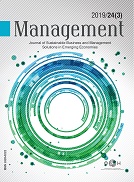Experiences and Expectations: Drivers of Urban Tourist Destination Competitiveness
DOI:
https://doi.org/10.7595/management.fon.2023.0016Keywords:
urban tourist destination, tourist destination attractiveness, competitiveness, tourists’ expectations, tourists’ experiencesAbstract
Research Question: This paper investigates into how the relationship between the perceived quality of tourists’ experiences and their expectations of the well-reputed urban tourist destinations affect its competitiveness. Motivation: Most of the published research in this field focuses on a general approach to the competitiveness, while the effect of the individual dimensions of tourist destination attractiveness, especially in case of urban tourist destinations, is still insufficiently explored. This study provides insights and recommendations for destination management that would result in a more effective management of urban tourist destinations and, consequently, increase competitiveness of the destination. Idea: The main idea of this study is to empirically evaluate the relationship between the perceived quality of tourists’ experiences and their expectations from urban tourist destinations, and to identify the most important dimensions of tourist destination attractiveness, taking into consideration different motivational factors. Based on the obtained results, it is possible to give recommendations that can contribute to increasing tourists’ satisfaction and competitiveness of the urban tourist destination. Data: The study was conducted on a sample of 312 respondents from Belgrade, a large outbound tourist centre, who met the pre-established set of criteria. Computer-aided web interviewing (CAWI) was used for data collection. Tools: The study was conducted using the Pearson correlation coefficient to determine the relationship between the perceived quality of experiences and expectations, and the SERVQUAL model for measuring quality of dimensions of tourist destination attractiveness by evaluating the differences between perceived quality and expectations, and descriptive statistics. Findings: Traditional understanding of tourists’ satisfaction that leads to tourist destination competitiveness is that the tourists’ expectations must be either met or exceeded. This study showed that tourists’ expectations from certain dimensions of tourist destination attractiveness may be higher than the quality of the experience with them, but tourists would still be satisfied if the perceived quality of their experiences was positive. Moreover, the study has identified three social and one physical dimension of tourist destination attractiveness as the most significant, regardless of tourists’ travel motivation. Contribution: The study contributes to the existing body of literature by introduction of the new data-driven approach to the strategic processes of managing urban tourist destination and its dimensions of tourist destination attractiveness.
Downloads
Published
How to Cite
Issue
Section
License
Copyright (c) 2023 Management:Journal of Sustainable Business and Management Solutions in Emerging Economies

This work is licensed under a Creative Commons Attribution-NonCommercial-NoDerivatives 4.0 International License.








